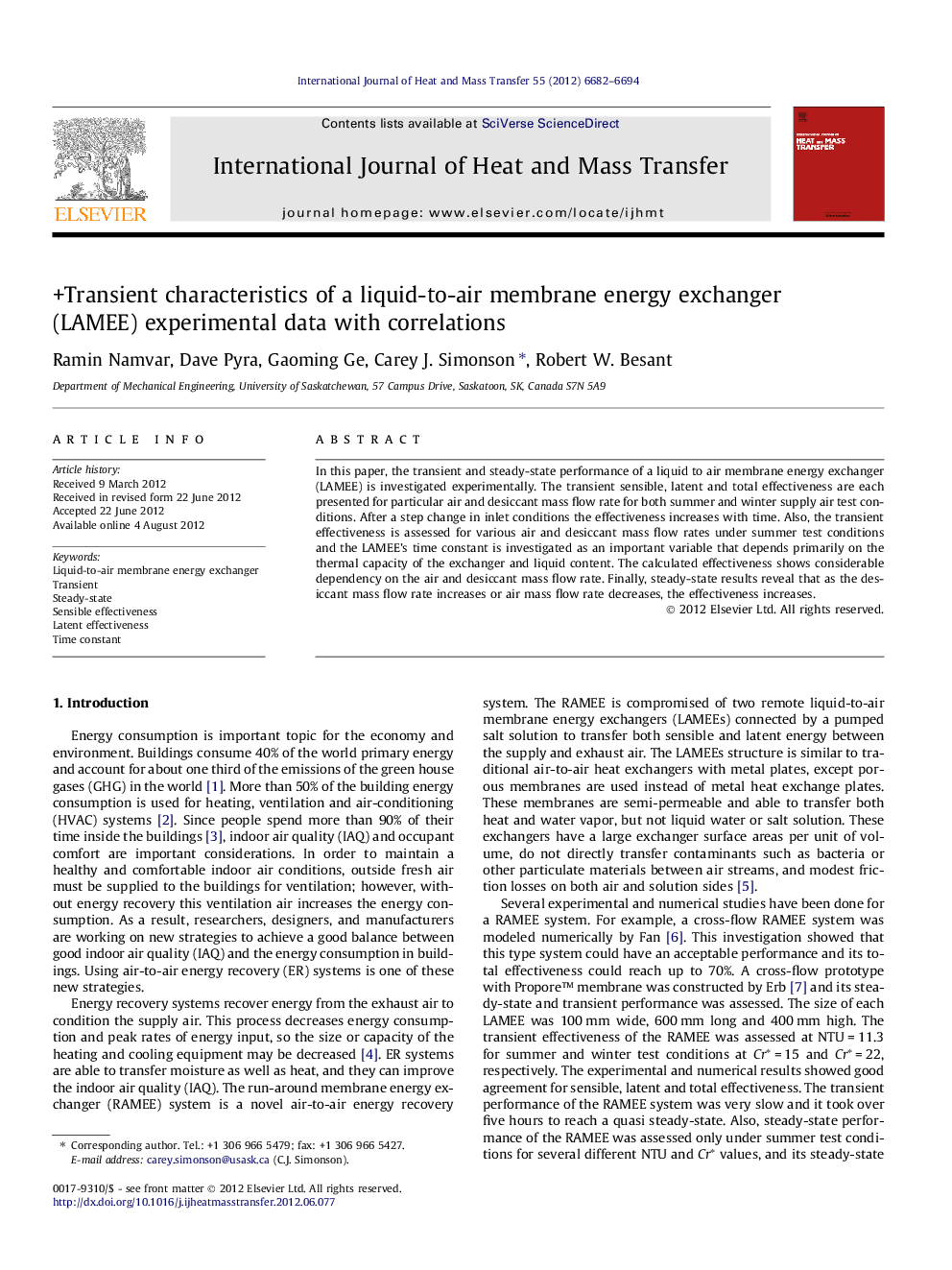| Article ID | Journal | Published Year | Pages | File Type |
|---|---|---|---|---|
| 658699 | International Journal of Heat and Mass Transfer | 2012 | 13 Pages |
Abstract
In this paper, the transient and steady-state performance of a liquid to air membrane energy exchanger (LAMEE) is investigated experimentally. The transient sensible, latent and total effectiveness are each presented for particular air and desiccant mass flow rate for both summer and winter supply air test conditions. After a step change in inlet conditions the effectiveness increases with time. Also, the transient effectiveness is assessed for various air and desiccant mass flow rates under summer test conditions and the LAMEE's time constant is investigated as an important variable that depends primarily on the thermal capacity of the exchanger and liquid content. The calculated effectiveness shows considerable dependency on the air and desiccant mass flow rate. Finally, steady-state results reveal that as the desiccant mass flow rate increases or air mass flow rate decreases, the effectiveness increases.
Keywords
Related Topics
Physical Sciences and Engineering
Chemical Engineering
Fluid Flow and Transfer Processes
Authors
Ramin Namvar, Dave Pyra, Gaoming Ge, Carey J. Simonson, Robert W. Besant,
